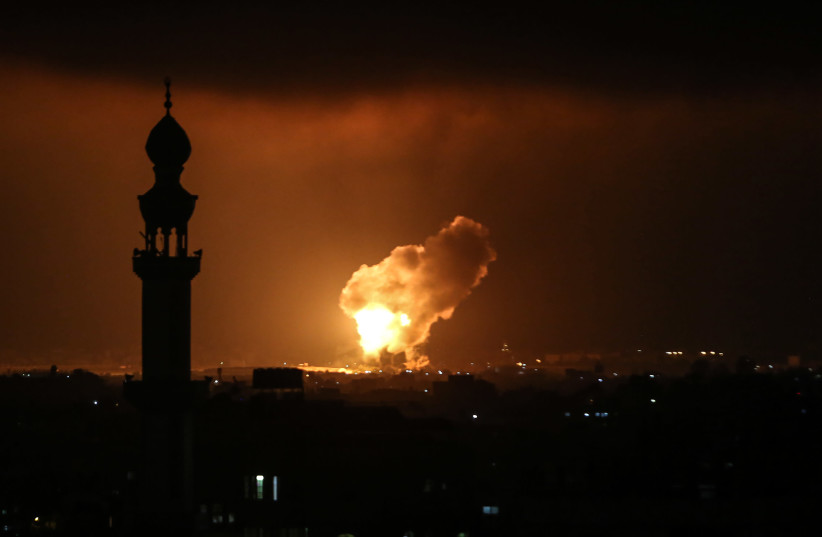Iranian media reported on airstrikes in Aleppo on Tuesday evening. In an escalation of rhetoric against Israel and the United States, Iran’s pro-regime Tasnim News, which is considered close to the IRGC, said that the aircraft flew over eastern Syria to carry out the attacks.
Iranian media reported on airstrikes in Aleppo on Tuesday evening. In an escalation of rhetoric against Israel and the United States, Iran’s pro-regime Tasnim News, which is considered close to the Islamic Revolutionary Guard Corps, said that the aircraft flew over eastern Syria to carry out the attacks.
The Tasnim report, which came soon after news of the airstrikes was announced in Syria, claimed that “based on the received information, in the attack on Aleppo Airport, the airspace of the east of the Euphrates was used. The airspace of this area – which is under the control of the Kurds of the SDF – is under the control of the American coalition, and Zionist fighters must use Jordanian airspace to enter it.”
The importance of this claim is that it points an accusing finger not only at the US but also at the US-backed Syrian Democratic Forces. Iran has used proxies in Syria to attack US bases in Syria in the past, including the US base at Tanf near the Jordanian border and US bases near the Euphrates. This area of the Euphrates River valley includes many Iranian bases on the western side of the river.
Why is this area significant to Iran?
Iran uses this area to traffic influence and weapons from Iraq via al-Bukamal to Deir ez-Zor and the T-4 base. Iran then moves the weapons toward Hama and Aleppo, and also to Damascus and the area of the Golan Heights or Lebanon. This is a corridor for Iran. As the Russian war in Ukraine drags on, Iran has set its sights on increasing its role in some areas of Syria, including northern Syria.

In the last week, there have been two rounds of airstrikes on the Aleppo area. Over the last month, there have been incidents near Hama as well. The Syrian regime and Iranian media have blamed Israel for the recent strikes.
Iran also used proxies in Iraq to fly drones to target US bases in mid-August. The US carried out two rounds of airstrikes in response. However, Iran has carried out numerous attacks on US facilities in Iraq and Syria over the last two years.
Iran often uses militia and terrorist proxies. In the last year, Iran has signaled that it is targeting US forces in retaliation for Israeli airstrikes. Tehran has also increased attacks on northern Iraq, claiming to target the “Mossad” in June 2022 near Erbil. In March 2022, Iran carried out a missile attack on Erbil. Reuters reported the attack was linked to Iran’s claims about an Israeli gas deal.
In November 2021, The New York Times reported that an Iranian proxy attack on Tanf was an Iranian response to Israeli strikes. Some reports also indicated that Syria asked Iran to stop attacking US forces in Syria.
Ynet reported last October, “The attack on American al-Tanf base in Syria indicates an uptick in Iran’s Quds Force’s actions in the region, and is perhaps also intended to pressure Washington, on a potential return to the 2015 nuclear deal.”
Iranian media accusing the US and US-backed forces in eastern Syria of enabling the attacks on Tuesday could create an excuse for Iran and its proxies to retaliate. Overall, the messaging is also designed to slam Kurdish forces and perhaps open the way for Russia and Iran – which work together on some issues – to back a new Turkish operation in Tal Rifat near Aleppo.
